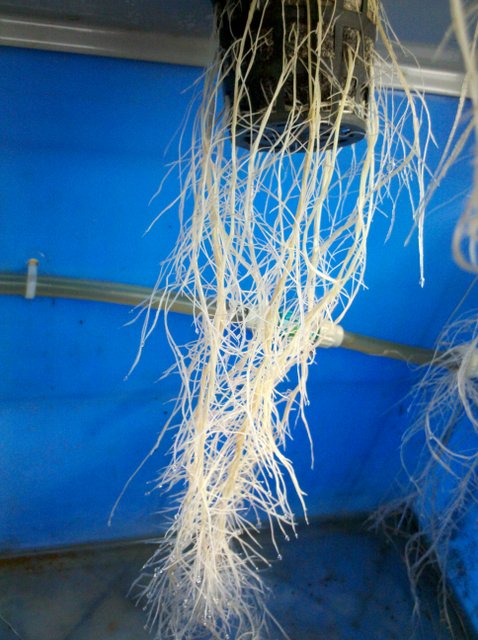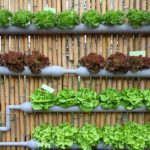
What is High Pressure Aeroponics?
Aeroponics is a technique of growing plants in chamber that is periodically sprayed with mist of the nutrient solution. High Pressure Aeroponics can be traced back to 1970s. It really took momentum after NASA reported it as the most efficient system to grow plants in both Earth and in Space. I explained What is Aeroponics in my previous post, but What is High Pressure Aeroponics? High pressure + Aeroponics is High Pressure Aeroponics! Simple Isn’t it? ? High pressure aeroponics is a branch of aeroponics that deals with growing plants in mist generated under high pressure. Due the high pressure,the mist particle size becomes very small. Smaller mist particles are easily absorbed by the plant roots.The study conducted by NASA revealed that 50-80 microns is the optimal size for the mist particles for efficient absorption by the plant roots.
Advantages of High Pressure Aeroponics
- High Pressure Aeroponics (HPA) uses 90% lesser water then conventional growing methods
- The nutrient requirement is also less compared to hydroponics as well as conventional farming.
- Planting density can be increased since there is no competition among plant roots.
- Spreading of diseases is less as plants root may not touch each other.
Disadvantages of High Pressure Aeroponics
High Pressure Aeroponics is not without its disadvantages.
- Setting up a system can require many parts/components. Making it difficult for newbies
- Due to high pressure and minute particle size, the high pressure Aeroponic nozzles have to be constantly monitored for clogs. Salt build up can quickly result in a clogged high pressure Aeroponic nozzle.
- Dependence on electricity or external power resource for continuous operation. Any Failure in the system can result in the failure of the crops in a short time.
Low Pressure vs High Pressure Aeroponics
Lets discuss things in little more detail. In Aeroponics, there are two types. Low Pressure Systems are those that operate under very low pressure. Low pressure Aeroponic systems merely cause a spray of water in tiny drops on the roots. These systems are operated using standard magnetic drive pump. These low pressure aeroponic pumps are connected to PVC tubing with set of low pressure sprinkler heads. The pumps are operated 24×7. The water drops created by these sprinkler heads are fairly large. This works well. Technically, when the nutrient solution in form of bigger drops hit the roots all the time, the system acts like a deep flow technique or a bubbler system. Though low pressure aeroponics works well, it is not as efficient as High pressure Aeroponics.
High Pressure Aeroponic Systems operate under very high pressure. Ideally high pressure aeroponics systems work at 80 to 100 PSI. This high pressure is used to atomize the nutrient solution when it is supplied via a tiny spray nozzle. THe dia of the nozzle ranges from 1mm to 5mm. Nutrient solution is forced via this tiny orifice at that pressure to create droplet size of 50 microns or less in diameter. Basically it is about making the nutrient solution in its tiniest form. Also, High Pressure aeroponics systems operate only for a short time and it operates in intervals not continuous. Typically, the high pressure mist lasts for a 2-5 seconds followed by up to 5 minutes of off time. Then the cycle repeats. The timing is achieved by a cyclic timer.
High Pressure Aeroponics and Droplet Size. In a research done by NASA, it is shown that water droplet size of roughly 50 microns are readily absorbed by the plant roots. The droplet size is important factor. Larger the water drop size, lesser oxygen is available. Again if the droplet size is too small like a those from the ultrasonic mister, there will be too much root hair development at the expense of leaves and shoot. So I guess, I answered the question “What is High Pressure Aeroponics?”. OK, we learnt What is high pressure aeroponics. What next ?. We are going to build a High pressure Aeroponics System with parts that are easily available. That’s what is next! Stay tuned.

Share this with your garden buddies:
Article source: http://feedproxy.google.com/~r/GeekgardenersWeblog/~3/NoExu7m_WHQ/
SHARE IT SO OTHERS CAN FIND THE BEST GARDENING INFO



